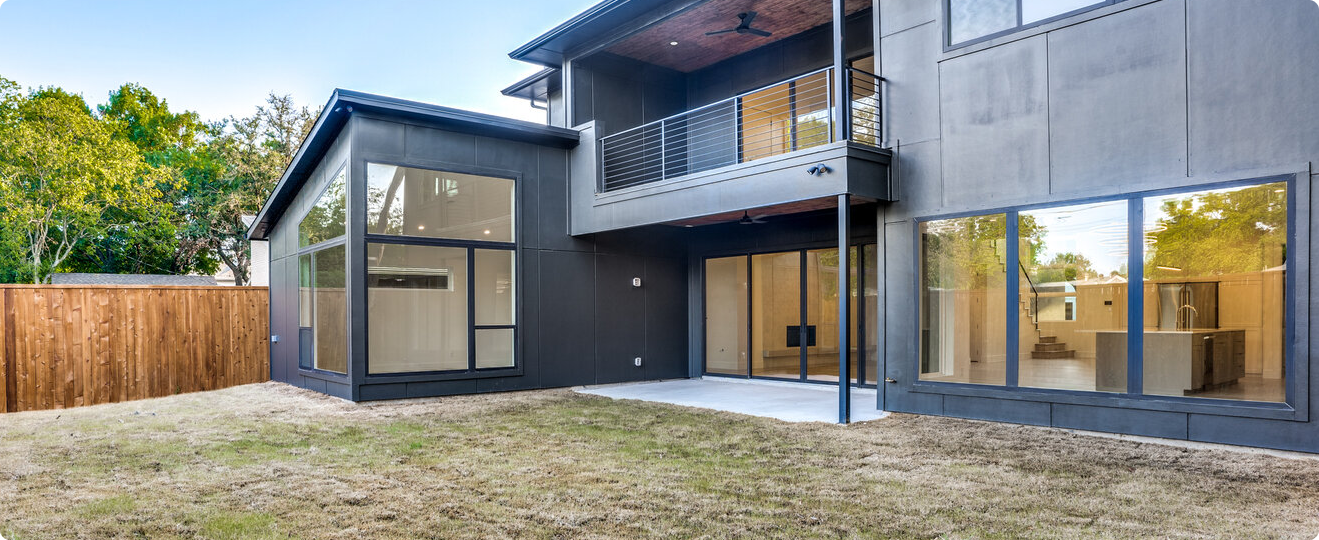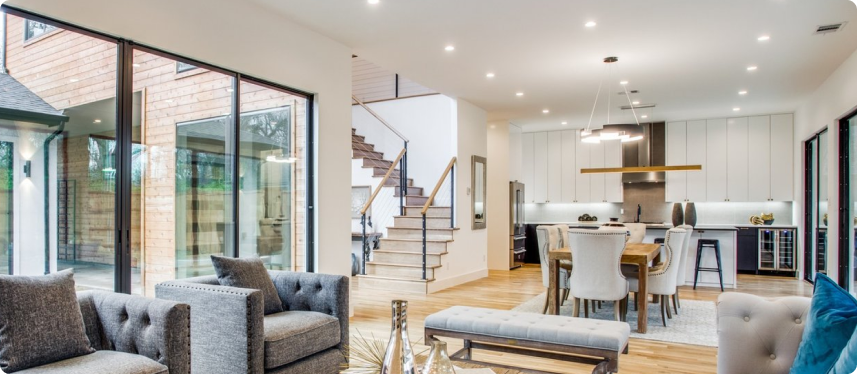
Importance of Choosing the Right Materials
For several reasons, choosing the right materials for attached ADUs is crucial. The climate is variable, so the materials used for an attached ADU must withstand weather conditions and provide good insulation.
Choosing high-quality materials can ensure durability and longevity with minimal maintenance. The materials used also affect the aesthetics and overall construction cost, with a potential for long-term cost savings from energy efficiency and reduced maintenance costs.

Types of Framing Materials
Several framing materials can be used for attached ADUs. These include:
| Framing | Description |
| Wood framing | This is the most common type of framing material used in residential construction. Wood is readily available, easy to work with, and provides good insulation. However, it is vulnerable to moisture and insect damage and may require regular maintenance. |
| Steel framing | Steel is a strong and durable material resistant to fire, pests, and moisture. It is also lightweight and can be pre-fabricated for easy installation. |
| Concrete framing | Concrete is a durable and fire-resistant material that provides good insulation and soundproofing. It is also resistant to pests and moisture. |
| Structural Insulated Panels | SIPs are prefabricated panels of a foam core sandwiched between two structural panels. They provide excellent insulation and are quick and easy to install. However, they may be more expensive than traditional framing materials and may limit design flexibility |
Insulation
Insulation is an important consideration when building an attached ADU, and several types of insulation materials are available. Fiberglass insulation is popular due to its cost-effectiveness, while cellulose insulation is eco-friendly and effective at reducing air leaks.
Spray foam insulation provides excellent thermal and sound insulation, while mineral wool insulation is resistant to pests and moisture. The choice of insulation material will depend on various factors such as budget, energy efficiency, and overall design of the ADU.
Roofing
Choosing the right roofing material is important for building an attached ADU. Various roofing materials include asphalt shingles, metal roofing, clay or concrete tiles, and wood shingles or shakes.
Asphalt shingles are affordable and easy to install, while metal roofing is durable and energy-efficient. Clay or concrete tiles provide excellent resistance to high winds and hot temperatures. Wood shingles or shakes are natural and eco-friendly but may require more maintenance.
Siding
Various siding materials include vinyl siding, fiber cement siding, wood siding, and stucco siding. Vinyl siding is affordable and low-maintenance, while fiber cement siding is durable and resistant to fire and insects.
Wood siding can provide a natural and rustic look but may require more maintenance. Stucco siding is a popular option in the Bay Area due to its ability to withstand high temperatures and resist fire.
Windows and Doors
Windows and doors are important components of an attached ADU. Common types of windows include double-hung windows, which are energy-efficient and offer good ventilation, and casement windows, which are more airtight but may be more expensive.
Cabinetry
Wood cabinetry is the most common choice for its durability and aesthetic appeal.
Laminate cabinetry is a more affordable option that can mimic the look of wood.
Plumbing and Electrical Materials
Copper piping is the most common choice for plumbing due to its durability and resistance to corrosion. PVC piping is also used for its affordability and ease of installation.
Electrical wiring is typically made of copper for its conductivity and durability.
Window and Door Materials
Vinyl windows and doors are popular for their energy efficiency and low maintenance. Wood windows and doors are also commonly used for their aesthetic appeal and durability.
Flooring Options
Hardwood flooring is a popular choice for its durability and aesthetic appeal.
Tile flooring is also common in areas that experience high humidity and precipitation, such as bathrooms and kitchens. Laminate and vinyl flooring are more affordable options that can mimic the look of hardwood or tile.
Want to Ensure That You Choose the Best Materials?
If you plan to build an attached ADU and want to ensure that you choose the best materials for your specific needs, contact ADU Specialist Bay Area today!
Our expert team has extensive experience designing and building ADUs in the Bay Area. We can help you choose materials that are durable, energy-efficient, and within your budget.
FAQs
To determine the best materials for your attached ADU project, it’s important to consult with a contractor or ADU specialist who has experience working with materials suitable for Bay Area construction.
When choosing framing materials for an attached ADU, it’s important to consider factors such as the structural requirements of the building code, the durability and longevity of the materials, the cost, and the environmental impact. Some common framing materials include wood, steel, and concrete.
Asphalt shingles are a common roofing material used for attached ADUs in the Bay Area, and they are a popular choice due to their affordability and ease of installation.
Wood is a cost-effective and versatile material for constructing an attached ADU. It is easy to work with and can be cut and shaped into various sizes and designs.